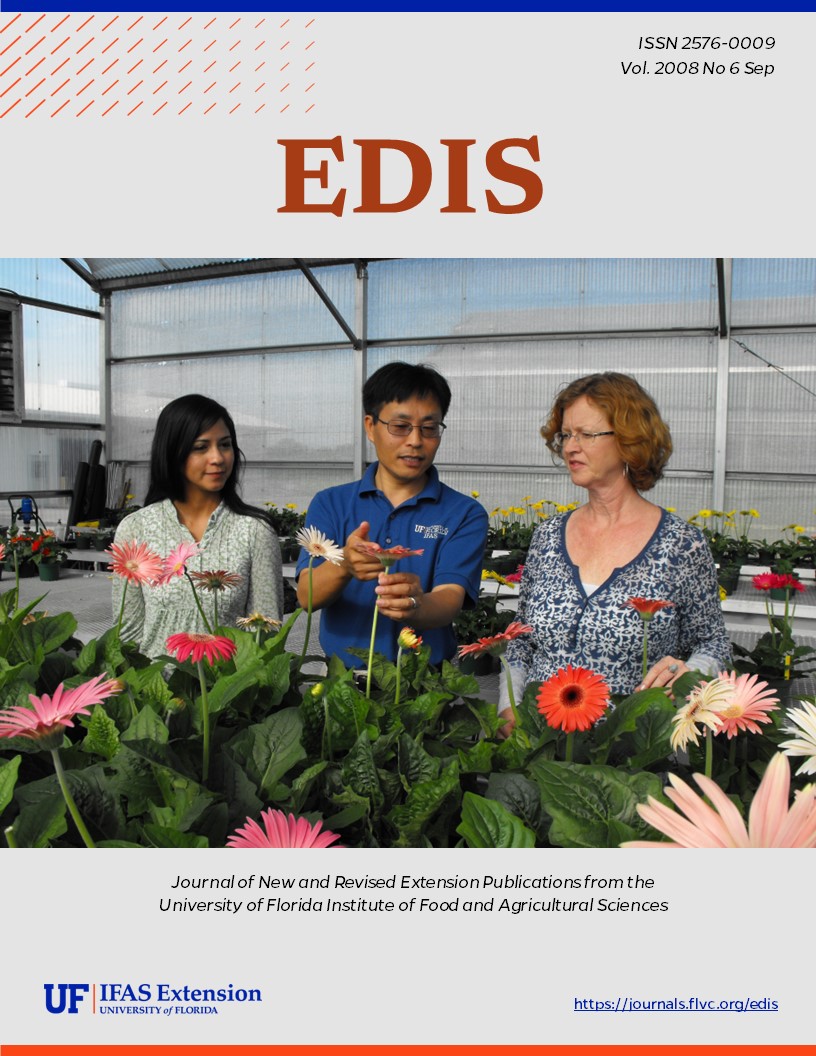Abstract
FOR-192, a 5-page illustrated fact sheet by Michael G. Andreu, Bijay Tamang, Melissa H. Friedman, and Don Rockwood, focuses on the advantages and disadvantages of living windbreaks for improving crop production and enhancing conservation activities in sustainable agriculture systems. Includes references. Published by the UF School of Forest Resources and Conservation, July 2008.
FOR192/FR253: The Benefits of Windbreaks for Florida Growers (ufl.edu)
References
Cleugh, H.A. 1998. Effects of windbreaks on airflow, microclimates and crop yields. Agroforestry Systems 41: 55-84 https://doi.org/10.1023/A:1006019805109
Cleugh, H.A. 2002. Parameterising the impact of shelter on crop microclimates and evaporation fluxes. Australian Journal of Experimental Agriculture 42:859-874. https://doi.org/10.1071/EA02006
DeWiest, D.R. and E.H. Livingston (eds). 2002. The Florida stormwater, erosion, and sedimentation control inspector's manual. Florida Department of Environmental Protection/Nonpoint Source Management Program, Tallahassee, Florida.
Gillette, D.A. 1986. Wind erosion. In: C. Carlson (ed.). Soil conservation: Assessing the national resources inventory, Volume 2. National Academy Press, Washington, D.C. Pp. 129-162.
Gottwald, T.R. and L.W. Timmer. 1995. The efficacy of windbreaks in reducing the spread of citrus canker caused by Xanthomonas campestris pv. citri. Tropical Agriculture (Trinidad) 72(3):194-201.
Gottwald, T.R., J.H. Graham and D.S. Egel. 1992. Analysis of foci of infection of Asiatic citrus canker in a Florida citrus orchard. Plant Diseases 76:386-396. https://doi.org/10.1094/PD-76-0389
Graham, J.H. and T.R. Gottwald. 1992. Research perspectives on eradication of citrus bacterial diseases in Florida. Plant Diseases 75:1193-1200. https://doi.org/10.1094/PD-75-1193
Guthrie, J.D. 1942. Trees, people and foresters. Journal of Forestry 40:477-480.
Larney, F.J., M.S. Bullock, H.H. Janzen, B.H. Ellert and E.C.S. Olson. 1998. Wind erosion effects on nutrient redistribution and soil productivity. Journal of Soil and Water Conservation 53:133-140.
Leite, R.P., Jr. and S.K. Mohan. 1990. Integrated management of citrus bacterial canker caused by Xanthomonas campestris pv. citri in the State of Parana, Brazil. Crop Protection 9:3-7. https://doi.org/10.1016/0261-2194(90)90038-9
Leys, J. and G. McTainsh. 1994. Soil loss and nutrient decline by wind erosion - cause for concern. Australian Journal of Soil and Water Conservation 7:30-35.
Nuberg, I.K. 1998. Effects of shelter on temperate crops: a review to define research for Australian conditions. Agroforestry Systems 41:3-34. Shah, S.R.H. and Y.P. Kalra. 1970. Nitrogen uptake of plants affected by windbreaks. Plant and Soil 33:573-580. https://doi.org/10.1007/BF01378247
Sudmeyer, R. and F. Flugge. 2005. The economics of managing tree-crop competition in windbreak and alley systems. Australian Journal of Experimental Agriculture 45:1403-1414. https://doi.org/10.1071/EA04155
Sudmeyer, R.A. and P.R. Scott. 2002a. Characterization of a windbreak system on the south cost of Western Australia. 1. Microclimate and wind erosion. Australian Journal of Experimental Agriculture 42:703-715. https://doi.org/10.1071/EA02007
Sudmeyer, R.A. and P.R. Scott. 2002b. Characterization of a windbreak system on the south cost of Western Australia. 2. Crop growth. Australian Journal of Experimental Agriculture 42:717-727. https://doi.org/10.1071/EA02008
Wang, H. and E.S. Takle. 1995. Numerical simulations of shelterbelt effects on wind direction. Journal of Applied Meteorology 34:2206-2219. https://doi.org/10.1175/1520-0450(1995)034<2206:NSOSEO>2.0.CO;2

